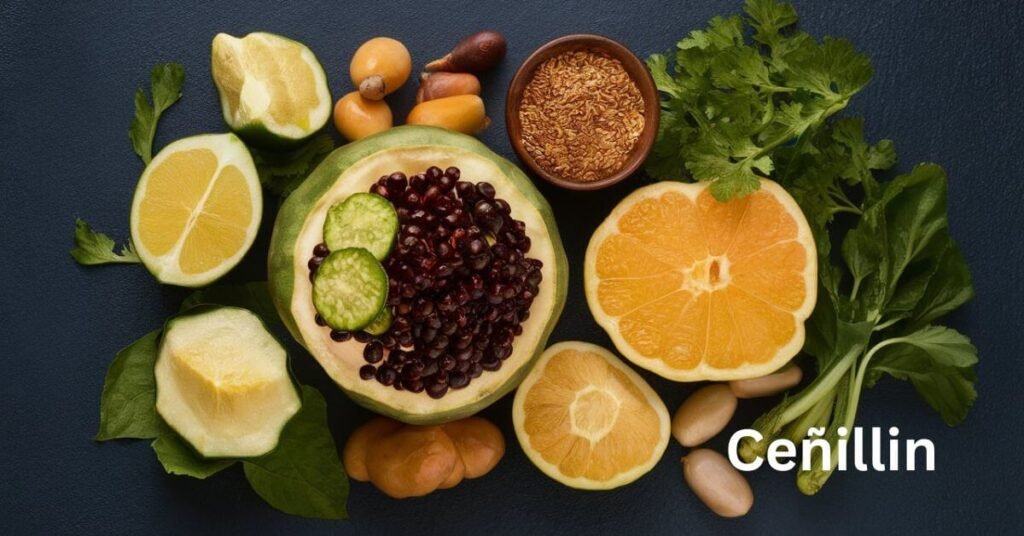Introduction
Have you ever come across the word “ceñillin” and wondered what it is? You’re not alone! Ceñillin is an intriguing herb that has captured the attention of culinary enthusiasts and health-conscious individuals alike. In this blog post, we’ll explore everything you need to know about ceñillin, from its origins and uses to the numerous benefits it offers. By the end of this post, you’ll have a newfound appreciation for this unique herb and maybe even be inspired to incorporate it into your own cooking!
What is Ceñillin?
Ceñillin is a lesser-known herb that is prized for its aromatic qualities and versatility in the kitchen. While it might not be as famous as basil or oregano, ceñillin holds its own in the world of culinary herbs. This herb is often used in traditional recipes, especially in regions where it grows naturally, but it’s also gaining popularity in modern kitchens for its distinct flavor and potential health benefits.
The Origins of Ceñillin
The origins of ceñillin are somewhat shrouded in mystery, but it is believed to have been used for centuries in various cultures. Some suggest that it has roots in Mediterranean cuisine, while others point to its use in Latin American dishes. Regardless of where it comes from, ceñillin has been passed down through generations, each one discovering new ways to make use of its unique properties.
How is Ceñillin Used in Cooking?
One of the most exciting things about ceñillin is its versatility in the kitchen. Here are some popular ways to use ceñillin in your cooking:
- Flavoring Soups and Stews: Ceñillin adds a warm, earthy flavor to soups and stews, making it a great addition to hearty dishes.
- Seasoning Meats: Whether you’re grilling, roasting, or frying, ceñillin can be used as a rub or marinade ingredient to enhance the flavor of meats.
- Infusing Oils and Vinegars: Create your own herb-infused oils or vinegars by adding ceñillin. This can be a delightful way to add a touch of sophistication to your salads and marinades.
- Baking: Believe it or not, ceñillin can also be used in baking, particularly in bread and savory pastries. It imparts a subtle yet distinct flavor that can elevate your baked goods.
Health Benefits of Ceñillin
Beyond its culinary uses, ceñillin is also valued for its potential health benefits. Although research is still ongoing, here are some of the potential health benefits associated with ceñillin:
- Antioxidant Properties: Ceñillin contains compounds that may help fight oxidative stress in the body, potentially reducing the risk of chronic diseases.
- Anti-Inflammatory Effects: Some studies suggest that ceñillin may have anti-inflammatory properties, which could be beneficial for conditions like arthritis.
- Digestive Aid: Ceñillin has been used in traditional medicine to help with digestion, particularly in relieving bloating and gas.
Growing Your Own Ceñillin
If you’re a fan of gardening, you might be interested in growing your own ceñillin. The good news is that ceñillin is relatively easy to grow, even for beginners. Here are some tips to get you started:
- Climate: Ceñillin thrives in a warm, sunny climate. If you live in a cooler area, consider growing it in a pot that you can move indoors during the colder months.
- Soil: This herb prefers well-drained soil. If you’re planting it in the ground, make sure the soil doesn’t retain too much moisture.
- Watering: Ceñillin doesn’t need a lot of water. Allow the soil to dry out between waterings to prevent root rot.
- Harvesting: You can start harvesting ceñillin once the plant is established and has plenty of leaves. Regular harvesting can encourage the plant to grow more.
Conclusion
Ceñillin might not be a household name yet, but it’s clear that this herb has a lot to offer. Whether you’re looking to add a new flavor to your dishes or explore the potential health benefits, ceñillin is worth trying. Its versatility in the kitchen and the possibility of growing it at home make it a great addition to any herb garden.
Frequently Asked Questions (FAQs)
Q1: Is ceñillin similar to any other herb?
A1: Ceñillin has a unique flavor profile, but some compare it to a mix of thyme and oregano. However, it has its own distinct taste that sets it apart.
Q2: Can ceñillin be used in desserts?
A2: While it’s not common, ceñillin can be used in certain savory desserts or bread, especially if you’re looking to experiment with flavors.
Q3: Is ceñillin available in grocery stores?
A3: Ceñillin is not always available in mainstream grocery stores, but you might find it in specialty stores or online.
Q4: How do I store fresh ceñillin?
A4: Store fresh ceñillin in the refrigerator, wrapped in a damp paper towel and placed in a plastic bag. It should last about a week.
Q5: Can I use dried ceñillin instead of fresh?
A5: Yes, dried ceñillin can be used, but keep in mind that the flavor will be more concentrated. Use about one-third of the amount you would use for fresh.

